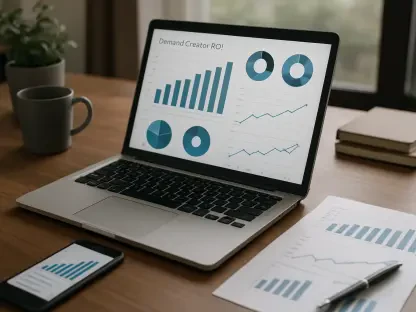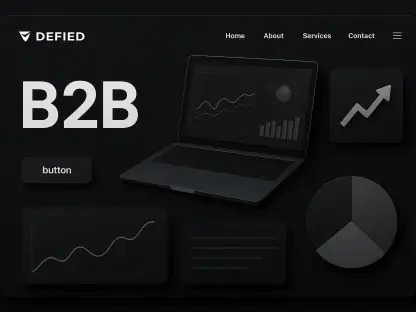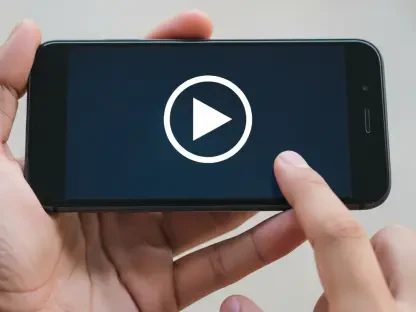Short introduction Dive into the world of Instagram marketing with Anastasia Braitsik, a global leader in SEO, content marketing, and data analytics. With her finger on the pulse of digital trends, Anastasia has helped countless brands transform their online presence through strategic planning and innovative content creation. In this interview, we explore the ins and outs of crafting a winning Instagram content plan, from setting actionable goals and maintaining a cohesive brand voice to leveraging data for better engagement. Whether you’re a small business owner or a seasoned marketer, Anastasia’s insights will inspire you to elevate your Instagram game.
How does a well-thought-out content plan contribute to standing out on a platform as crowded as Instagram?
With over 2 billion monthly active users, Instagram is a battlefield for attention. A content plan acts like a roadmap, helping you carve out a unique space for your brand by ensuring every post aligns with your identity and goals. It’s about creating a consistent presence that cuts through the noise—think of it as building a recognizable vibe that users instantly connect with. Without a plan, you risk blending into the endless scroll. A strategic approach lets you focus on what resonates with your audience, whether that’s through compelling visuals or targeted campaigns, so you’re not just posting, but actually being seen and remembered.
What are the consequences of posting on Instagram without a clear strategy or plan in place?
Posting randomly without a plan is like throwing darts in the dark—you might hit something, but it’s mostly a waste of effort. Without structure, your content lacks direction, and you’re likely to miss out on connecting with your audience or driving any real results. It can lead to inconsistent messaging, where your followers don’t know what to expect from you, which erodes trust and engagement. Plus, you’re not tying posts to bigger goals, so there’s no way to measure success or learn from what works. Over time, this scattershot approach can stall your growth and make your account feel irrelevant.
Can you walk us through the initial steps of building an effective Instagram content calendar?
Absolutely. The first step is to get a bird’s-eye view of your strategy by outlining your overarching goals and themes. I start with a template that includes an overview tab to map out campaign cycles and key objectives—like growing followers or boosting engagement. From there, I break it down into monthly or weekly plans, deciding on content pillars that support those goals, whether it’s educational posts, product highlights, or seasonal campaigns. Then, I slot in specific topics, post types, and captions, making sure everything aligns with the broader marketing funnel. It’s also crucial to assign visuals or assets early on, so you’re not scrambling last minute. This structured setup keeps everything organized and ensures no opportunities slip through the cracks.
How do you integrate Instagram content with larger marketing campaigns or initiatives for maximum impact?
Integrating Instagram with bigger marketing efforts is all about synergy. You want your Instagram content to amplify what’s happening elsewhere in your brand’s ecosystem. For instance, if you’re launching a new product, you can build a content series on Instagram—tease it with sneak peeks, collaborate with influencers for videos, or run a giveaway to spark buzz. The key is to map out how each post ties into the campaign’s timeline and messaging, ensuring it complements other channels like email or your website. I often use a marketing calendar alongside the Instagram plan to align posts with holidays or events, which boosts relevance and engagement. It’s about creating a seamless story across platforms so your audience feels the momentum no matter where they encounter your brand.
What’s your process for defining meaningful goals for an Instagram account?
Defining goals starts with understanding what your brand needs from Instagram. Are you looking to grow your audience, drive engagement, or push product sales? I always recommend making goals SMART—specific, measurable, achievable, relevant, and time-bound. For example, instead of saying “get more followers,” aim for “grow followers by 20% in three months.” I also break these down into smaller milestones, like hitting 5% growth each month, so progress feels tangible. It’s important to consider your audience and industry too—what works for a fashion brand might not for a tech company. Once goals are set, I tie them to specific content types or campaigns, tracking progress with clear metrics to stay on course.
Which key performance indicators do you prioritize when measuring success on Instagram, and why?
The KPIs I focus on depend on the goals, but some standouts are engagement rate, reach, follower growth, and click-through rates if you’re driving traffic. Engagement rate—likes, comments, shares, and saves—tells me how much your audience cares about your content, which is often more valuable than raw numbers. Reach shows how far your posts are spreading, especially with algorithm changes favoring viral content. For campaigns with specific calls to action, like linking to a product page, click-throughs are critical. I also look at story views and interactions if that’s a big part of the strategy. These metrics give a well-rounded picture of performance, helping pinpoint what’s working and what needs tweaking.
How do you leverage Instagram Insights to refine and improve a content strategy over time?
Instagram Insights is a goldmine for strategy adjustments. I dive into data points like post performance—seeing which content gets the most likes, comments, or shares—and audience demographics, like age ranges or active times. This tells me who I’m reaching and when to post for maximum impact. I also check metrics on stories and reels, as those formats often have different engagement patterns. If a post underperforms, I analyze why—was it the timing, the caption, or the visual? Then I test variations to see what sticks. Insights also reveal trends over time, so if I notice a dip in engagement, I can pivot to fresher content ideas or adjust my posting schedule. It’s all about using data to make informed decisions rather than guessing.
Why is maintaining a consistent theme and tone so critical for a brand’s Instagram presence?
Consistency in theme and tone is what makes your brand instantly recognizable on Instagram. When your visuals—colors, filters, typography—and messaging feel cohesive, it builds trust and familiarity with your audience. Think of it as your digital signature; users scrolling through their feed should know it’s you without even seeing your handle. A consistent tone in captions and responses also shapes how people perceive your brand personality—whether it’s playful, professional, or inspiring. Without this, your account can feel disjointed, confusing followers and diluting your impact. It’s about creating a unified experience that keeps people coming back for more.
What advice do you have for our readers who are just starting to build their Instagram content strategy?
My biggest piece of advice is to start small but strategic. Don’t feel pressured to post every day—focus on quality over quantity. Begin by defining one or two clear goals, like building awareness or engaging your current followers, and create a simple content calendar for a month. Experiment with different post types—photos, reels, stories—and see what your audience responds to. Consistency matters, so pick a posting schedule you can stick to, even if it’s just a few times a week. Pay attention to feedback and data from the get-go, using Instagram Insights to guide your next steps. Lastly, don’t be afraid to show your brand’s personality—authenticity goes a long way in connecting with people on this platform.









